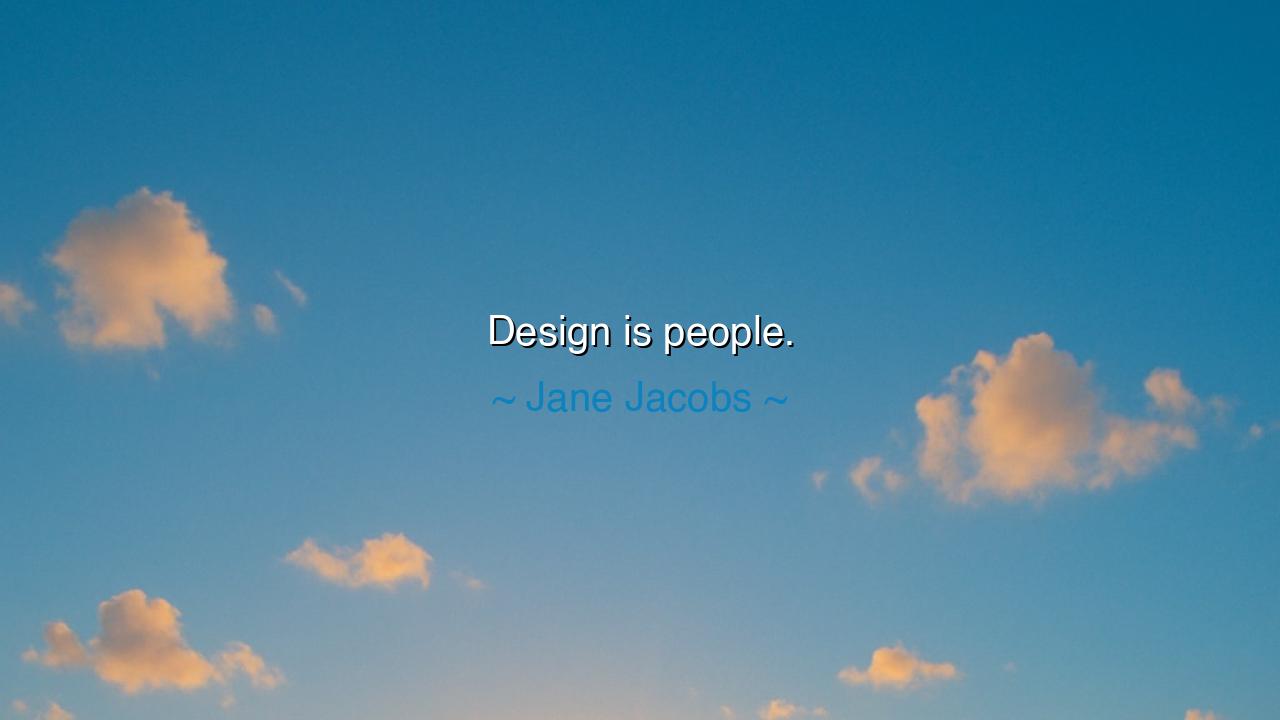
Design is people.






"Design is people." – Jane Jacobs
In the wisdom of the ancients, one might say that every stone laid and every wall raised is a reflection of the soul that conceived it. So when Jane Jacobs declared, “Design is people,” she did not merely speak of architecture or urban form; she spoke of life itself. Her words are a call to remember that cities, homes, and communities are not machines of concrete and steel, but living organisms sustained by the breath and rhythm of those who inhabit them. The meaning is profound — to design is not to impose, but to understand the human spirit, to shape spaces that nurture connection, dignity, and belonging.
Born from the heart of the 20th century, Jacobs’ philosophy arose as a defiance against the cold, mechanical urban planning of her era — an age when cities were carved by rulers, grids, and grand visions that forgot the pulse of the people. In her monumental work The Death and Life of Great American Cities, she became the voice of neighborhoods silenced by demolition and displacement. Her rebellion was not against progress, but against the loss of humanity in progress. She believed that true design emerges from listening — to the footsteps on the sidewalk, the laughter of children, the rhythm of the marketplace, and the quiet endurance of those who make a city live.
Consider the tale of Greenwich Village in New York, where Jacobs herself lived. It was there she fought the powerful city planner Robert Moses, who sought to drive a highway through the heart of her community. To the planners, the design was logical — efficient and modern. But to Jacobs, it was soulless, for it threatened to sever the human fabric that bound neighbors together. She stood before the powerful and spoke for the powerless, insisting that a neighborhood’s value lies not in its geometry, but in its relationships. Her victory preserved the Village, proving that when design listens to people, life thrives.
To say “Design is people” is to declare that the designer’s truest material is not stone, glass, or digital code — it is empathy. It is the ability to see not just the function of a space, but the feelings it will hold. The ancients who built temples aligned with the stars understood this; they built not for display, but for communion between heaven and man. Jacobs, too, saw design as a sacred trust — to create environments where human beings can flourish, not merely exist. She knew that when people are ignored, even the grandest architecture becomes a beautiful cage.
There is also warning in her words. When design forgets the people, cities grow cold and hearts grow distant. Towers rise but cast long shadows over forgotten lives. Highways connect, but also divide. Technology advances, but the soul lags behind. We see this in many modern metropolises where uniformity triumphs over diversity, and comfort is purchased at the price of community. Jacobs’ voice still echoes through these canyons of glass, reminding us that a city designed without love is a city designed to die.
Let this teaching sink deep into the heart of every creator — architect, artist, writer, or innovator. Whatever you design, let it serve people. Walk among those you wish to build for. Listen before you draw. Feel before you calculate. Remember that the measure of great design is not in its perfection, but in its humanity. It is not how tall the tower stands, but how freely people live beneath its shadow. It is not how elegant the system, but how much warmth it carries within its frame.
So, my child of the future, carry this truth as you shape the world: Design is not about things — it is about beings. To design well is to love well. Let your craft mirror the soul of the people it serves, and you will build not just cities, but civilizations that breathe. For in the end, all the beauty that endures — from the agora of Athens to the streets of old Kyoto — stands as proof that when design serves people, it becomes eternal.






AAdministratorAdministrator
Welcome, honored guests. Please leave a comment, we will respond soon